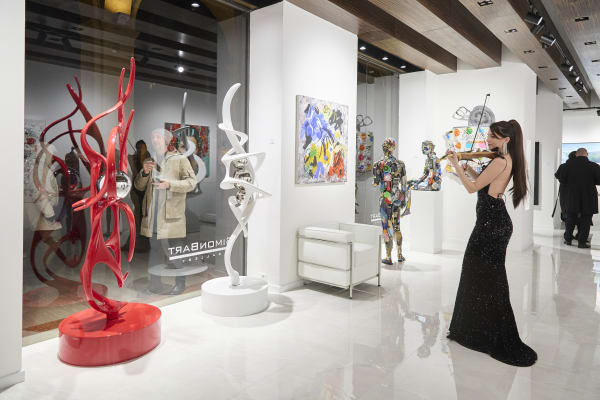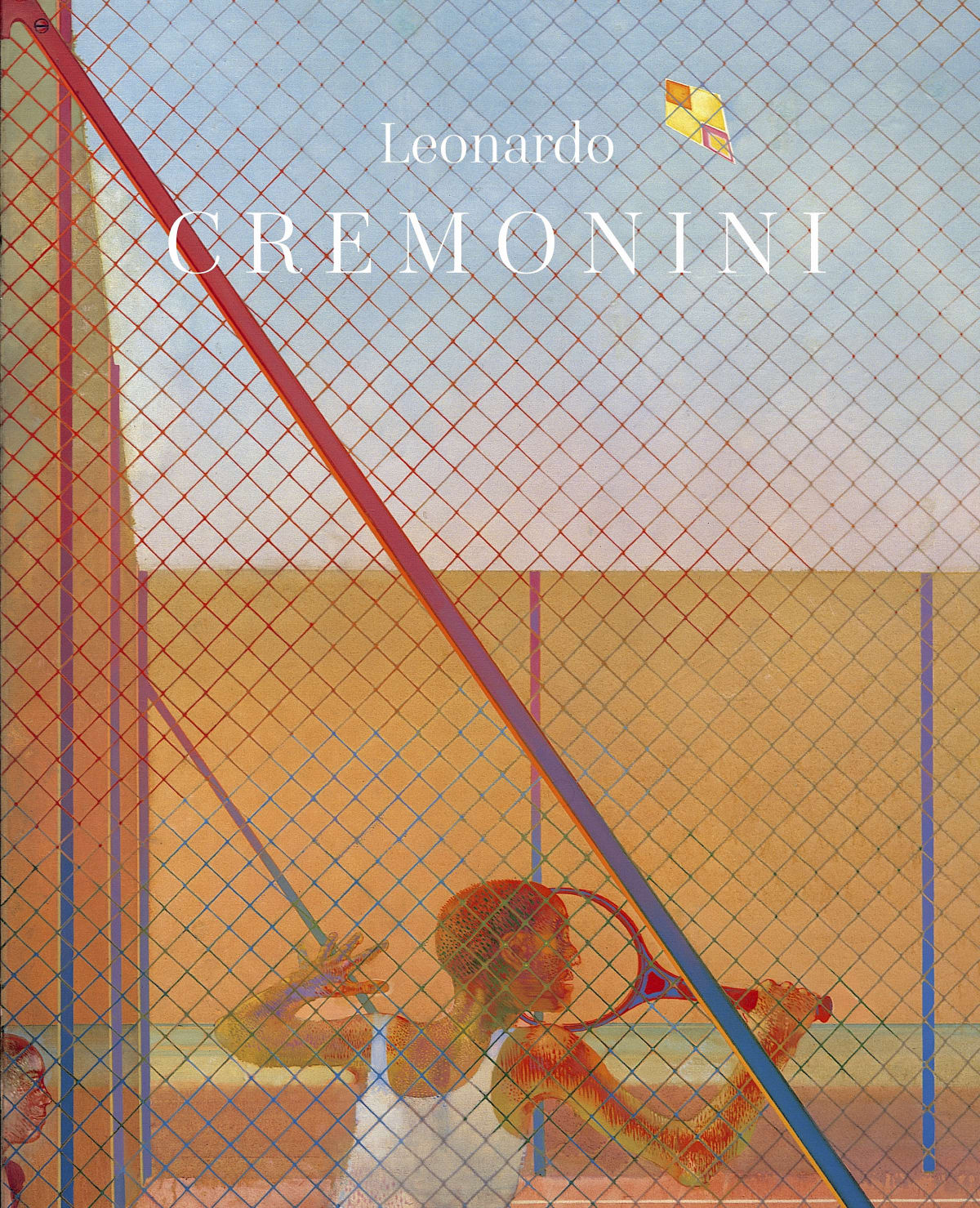Cremonini, catalogo della mostra (Milano, Galleria del Milione), a cura di M. Valsecchi, Edizioni del Milione, Milano 1960.
M. Valsecchi, Leonardo Cremonini. 12 opere, Edizioni del Milione (Giovane pittura italiana, 12), Milano 1962.
Leonardo Cremonini. Mostra antologica 1953-1969, catalogo della mostra (Bologna, Museo Civico), con testi di F. Solmi, L. Althusser, Alfa, Bologna 1969.
Cremonini, catalogo della mostra (Bruxelles, Palais des Beaux-Arts; Basel, Kunsthalle), con il testo di M. Butor, M. Clarac-Serou, P. Gaudibert, L. Althusser, E. Langui, Imprimerie Laconti, Bruxelles 1969.
G. Briganti, Cremonini. 80 disegni, Vallecchi, Firenze 1970.
Leonardo Cremonini. Meister der italienischen Moderne 9, catalogo della mostra (Darmstadt, Kunsthalle), con testi di B. Krimmel, L. Althusser, M. Butor, P. Gaudibert, Kunstverein Darmstadt, Darmstadt 1970.
P. Gaudibert, Cremonini, in Figurations (1960-1973), coll. 10-18, Union Générale d'Éditions, Paris 1973.
Cremonini. Dessins 1970-1973, catalogo della mostra (Paris, Galerie du Dragon), con testi di M. Le Bot, J. Laude, M. Clarac-Serou, Éditions du Dragon, Paris 1973.
Cremonini, catalogo della mostra (Strasbourg, Musée d'Art Moderne et Contemporain), con il testo di J.-L. Faure, L. Althusser, M. Clarac-Serou, M. Butor, Musées de la Ville de Strasbourg, Strasbourg 1973.
Cremonini, catalogo della mostra (Genève, Galerie Jan Krugier), con testi di A. Moravia, A. Jouffroy, Galerie Jan Krugier, Genève 1975.
Cremonini, peintures 1975-1978, catalogo della mostra (Paris, Galerie Claude Bernard), con testi di M. Le Bot, L. Cremonini, Claude Bernard, Paris 1979.
M. Le Bot, L. Cremonini, Les Parenthèses du regard, Fayard, Paris 1979.
Leonardo Cremonini, testi di J. Brosse, P. Emmanuel, A. Michelson, M. Clarac-Sérou, L. Althusser, M. Butor, P. Leonard, E. Langui, M. Le Bot, M. Troche, A. Moravia, P. Gaudibert, G. Lascault, M. Jouffroy, G. Bréerette, P. Belfond, Paris 1979.
Leonardo Cremonini, testi di M. Valsecchi, P. Emmanuel, L. Althusser, G. Briganti, M. Butor, E. Siciliano, F. Solmi, L. Carluccio, A. Moravia, U. Eco, M. De Micheli, A. Del Guercio, M. Le Bot, Grafis, Bologna 1979.
Leonardo Cremonini, catalogo della mostra (Tokyo, Seibu Museum of Art), con testi di G. Bréerette, P. Emmanuel, T. Okada, Seibu Museum of Art, Tokyo 1980.
Cremonini. Peintures 1978-1982, catalogo della mostra (Paris, Galerie Claude Bernard), con testo di U. Eco, Claude Bernard, Paris 1983.
Cremonini. Douze ans de peinture. 1970-1982, catalogo della mostra (Grenoble, Musée de Grenoble; Carcassonne, Tours Narbonnaises), con testi di U. Eco, P. Gaudibert, Grafis, Bologna 1983.
Cremonini. Opere dal 1960 al 1984, catalogo della mostra (Spoleto, Palazzo Racani-Arroni), con testi di I. Calvino, U. Eco, B. Mantura, Grafis, Bologna 1984.
V. Sgarbi, Sous le rêve du soleil, Bisonte/Monte dei Paschi di Siena, Siena 1986.
Cremonini. Opere dal 1953 al 1985, catalogo della mostra (Siena, Spedale di Santa Maria della Scala) con testi di I. Calvino, E. Crispolti, Grafis, Bologna 1986.
Leonardo Cremonini, con testi di W. Rubin, P. Emmanuel, L. Althusser, M. Clarac-Sérou, M. Butor, A. Moravia, P. Gaudibert, G. Lascault, U. Eco, G. Bréerette, I. Calvino, M. Jouffroy, M. Le Bot, J. Brosse, Skira, Genève 1987.
Leonardo Cremonini. Fogli Ischitani, disegni tra il 1951 e il 1957, catalogo della mostra (Ischia Ponte, Galleria delle Stampe Antiche), con testo di E. Malagoli, Ischia 1987.
Leonardo Cremonini, con testi di W. Rubin, M. Valsecchi, L. Althusser, G. Briganti, F. Solmi, E. Siciliano, A. Moravia, L. Carluccio, A. Del Guercio, U. Eco, M. De Micheli, I. Calvino, A. Jouffroy, M. Le Bot, E. Crispolti, J. Brosse, Grafis, Bologna 1988.
Les parenthèses de l'été, catalogo della mostra (Monaco, Galerie Le Point) con testo di M. Butor, Galerie Le Point, Monaco 1989.
Leonardo Cremonini. Les parenthèses de l'été, catalogo della mostra (Orange, Musée d'Orange) con testo di M. Jouffroy, Orange 1991.
Cremonini. Peintures 1987-1991, catalogo della mostra (Galerie Claude Bernard, Paris) con testo di H. Haddad, Claude Bernard, Paris 1991.
Cremonini. Peintures 1987-1991, catalogo della mostra (Mission départementale d'Action Culturelle, Aix-en-Provence), con testo di M. Le Bot, Grafis, Bologna 1992.
Les divertissements passent, les avertissements restent, catalogo della mostra (Musée Bertrand, Châteauroux), con testo di R. Debray, Châteauroux 1992.
Les fantômes de plein midi et les vertiges du visible, catalogo della mostra (Institut Culturel Français, Salonique) con testo di M. Lambraki Plaka, Salonique 1994.
Leonardo Cremonini. Peintures-aquarelles, catalogo della mostra (Monaco, Galerie Le Point), con testi di R. Debray, L. Cremonini, Galerie Le Point, Monaco 1994.
Cremonini. Aquarelles et petits formats 1951-1993, catalogo della mostra (Paris, Musée-Galerie de la Seita), con testo di R. Debray, Skira, Genève 1995.
Cremonini, catalogo della mostra (Metz, Maison de la Culture e des Loisirs), con testi di G. Lascault, C. Serpieri, L. Cremonini, Metz 1995.
R. Debray, L. Cremonini, Leonardo Cremonini, éléments. Dialogue entre Régis Debray et Leonardo Cremonini, Skira, Genève 1995.
Cremonini. Peintures 1965-1995, catalogo della mostra (Biron, Château de Biron; Ribérac, Collégiale Notre-Dame de Ribérac), con testi di R. Debray, F. Künzi, Conseil général de la Dordogne, Dordogne 1996.
Cremonini 1958-1961. Minéral, végétal, animal / Minerale, vegetale, animale, catalogo della mostra (Paris, Galerie Dionne), con testi di M. Butor, P. Emmanuel, Seuil/ Edizioni della Bezuga, Paris/Firenze 1996.
P. Bonafoux, Monologue intérieur à propos de Leonardo Cremonini, in L. Boitel e R. Demoris, La mer et ses parenthèses, Claude Bernard, Paris 1998.
Leonardo Cremonini. Parenthèses d'été, catalogo della mostra (Aosta, Museo Archeologico Regionale), con testi di G. Lascault, G. Soavi, Musumeci, Aosta 1999.
Cremonini. Une rétrospective 1950-2000, catalogo della mostra (Monaco, Salle du Quai Antoine Ier), con testi di G. Urbinati, G. Balandier, M. Butor, R. Debray, Electa, Milano 2000.
Cremonini. Une rétrospective 1953-2000, catalogo della mostra (La Seyne-sur-Mer, Villa Tamaris), con testi di U. Eco, R. Debray, Toulon 2002.
Cremonini. Antologica 1953-2001, catalogo della mostra (Milano, Museo della Permanente), a cura di F. Gualdoni, A. Montrasio, con testi di I. Calvino e poesie di A. Merini, De Agostini, Milano 2002.
Cremonini. Antologica retrospettiva. 2003-1953, catalogo della mostra (Bologna, Pinacoteca Nazionale), a cura di A. Baccilieri, V. Mascalchi, con testi di U. Eco, I. Calvino, R. Debray, A. Baccilieri, P. Weiermair, E. Frattolo, L'Artiere edizionitalia, Bologna 2003.
Cremonini. Gli animali dell'uomo. Dipinti e disegni 1951-1999, catalogo della mostra (Sesto Fiorentino, Gruppo Gualdo), con testo di A. Natali, Gruppo Gualdo, Firenze 2005.
Cremonini. Peintures 1999-2005, catalogo della mostra (Bologna, Arte Fiera; Paris, Galerie Claude Bernard), con testi di R. Debray, J.-P. Domecq, Claude Bernard, Paris 2006.
Cremonini weekend, catalogo della mostra (Prague Národní Galerie-Veletržní Palác), con testi di O. Urhová, F. Kunzi, Národní Galerie, Prague 2007.
Leonardo Cremonini 1944-1950. Gli anni di Brera, catalogo della mostra (Legnano, Palazzo Leone da Perego), con testi di F. Arensi, F. Künzi, Allemandi, Torino 2008.
Leonardo Cremonini. Disegni e acquerelli. 1946-1996, a cura di F. Arensi, A.Buffetti, con testi di F. Arensi, G. Briganti, J.Brosse, A.Buffetti, M. Clarac-Serou, E. Frattarolo, progetto editoriale Associazione A. Buffetti, Allemandi, Torino 2009.
Leonardo Cremonini. Paintings 1965-2007. catalogo della mostra (Athenes, Athinais Cultural Centre) con testi di U. Eco, M. Lambraki-Plaka, T. Mavrotas, A. Baccilieri, L.Carluccio, Athenes 2010.
Leonardo Cremonini, Gabriele Mattera, L'amicizia della pittura. catalogo della mostra (Ischia, Castello Aragonese) con testi di A. M. Mattera, E. Frattarolo, Paparo, Napoli 2010.
R. Debray, L. Cremonini, l'hypothèse du désir, riedizione dell'intervista tra R. Debray e L. Cremonini, integrata con nuovi testi e foto di C. Mercadier, l'Atelier Contemporain, Strasbourg 2015.
Leonardo Cremonini. Le insolenze del sole, catalogo della mostra (Athenes, Museum of Hydra) con testi di D. Adamopoulou, A. Veroucas, Mueseum of Hydra, Athenes 2016.
Leonardo Cremonini. Timeless Monumentality. Paintings from The William Louis-Dreyfus Foundation, catalogo della mostra (Fairfield, Connecticut, Fairfield University Art Museum) con testi di W. Rubin, L. Canova, L. Wolk-Simon, The William Louis-Dreyfus Foundation inc, New York 2016.
Leonardo Cremonini. 1925-2010, catalogo della mostra (Paris, Galerie T&L), con testi di J.-J. Aillagon, T. Hertzog, conversazione di G. Louis-Dreyfus e L. Cremonini, Galerie T&L, Paris 2017.
Leonardo Cremonini. Huis-clos. Peintures et multiples, catalogo della mostra (Paris, Galerie Marie Vitoux), con testi di J.-L. Chalumeau, C. Noorbergen, M. Le Bot, P. Cremonini, Galerie Marie Vitoux, Paris 2019.
Leonardo Cremonini. Dessins, aquarelles, petits formats, catalogo della mostra (Paris, Galerie T&L-Prisme), con testi di B.-H. Levy, T. Hertzog, Galerie T&L-Prisme, Paris 2020.
Leonardo Cremonini, Karl Plattner, i pittori della solitudine, catalogo della mostra (MART Museo di Arte Moderna e Contemporanea di Trento e Rovereto), con testi di V. Sgarbi, D. Ferrari, MART Museo di Arte Moderna e Contemporanea di Trento e Rovereto 2021.
























